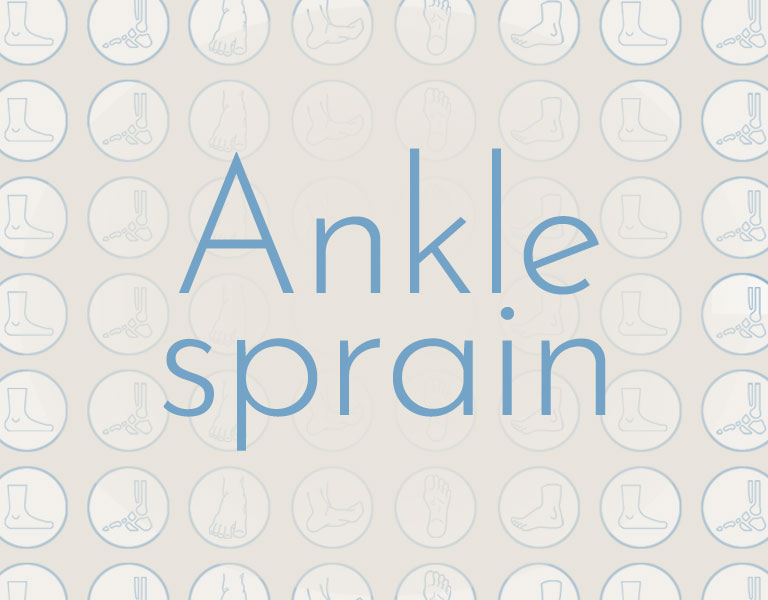Ankle Sprain
An ankle sprain is a common injury and usually occurs when the ankle is twisted, causing injury to the soft tissue and ligaments.
Ankle Sprain
Anatomy
A ligament is made up of multiple strands of tissue similar to a nylon rope. A sprain results in tearing of the ligaments. The tear can be a complete tear of all the strands of the ligament or a partial tear. The lateral ligaments (those on the outside of the ankle) are by far the most commonly injured ligaments in a typical inversion injury of the ankle.
Symptoms
Initially, the ankle is swollen, painful, and can become bruised due to ruptured blood vessels from the tearing of the soft tissues. Most of the initial swelling is actually bleeding into the surrounding tissues which increases over the next 24 hours.
Diagnosis
The diagnosis of an ankle sprain is usually made by physical examination of the ankle with x-rays to make sure that none of the bones of the ankle are fractured. If your doctor suspects that there is a complete rupture of the ligaments, he or she may order stress x-rays, as well. These x-rays are taken while someone twists or “stresses” the ligaments. Also an MRI of the injured ankle will give the surgeon the ability to evaluate the ankle ligaments as well as the surrounding tendons.
Medical Treatment
Treatment begins by using the PRICE principle: Protection, Rest, Ice, Compression, and Elevation. Crutches can prevent weight bearing on the ankle, and casts are used in severe cases. Healing of the ligaments usually takes about 6 weeks, but the swelling may be present for several months. Depending upon the severity of the ligament damage, physical therapy, surgery and rehabilitation may be suggested.



